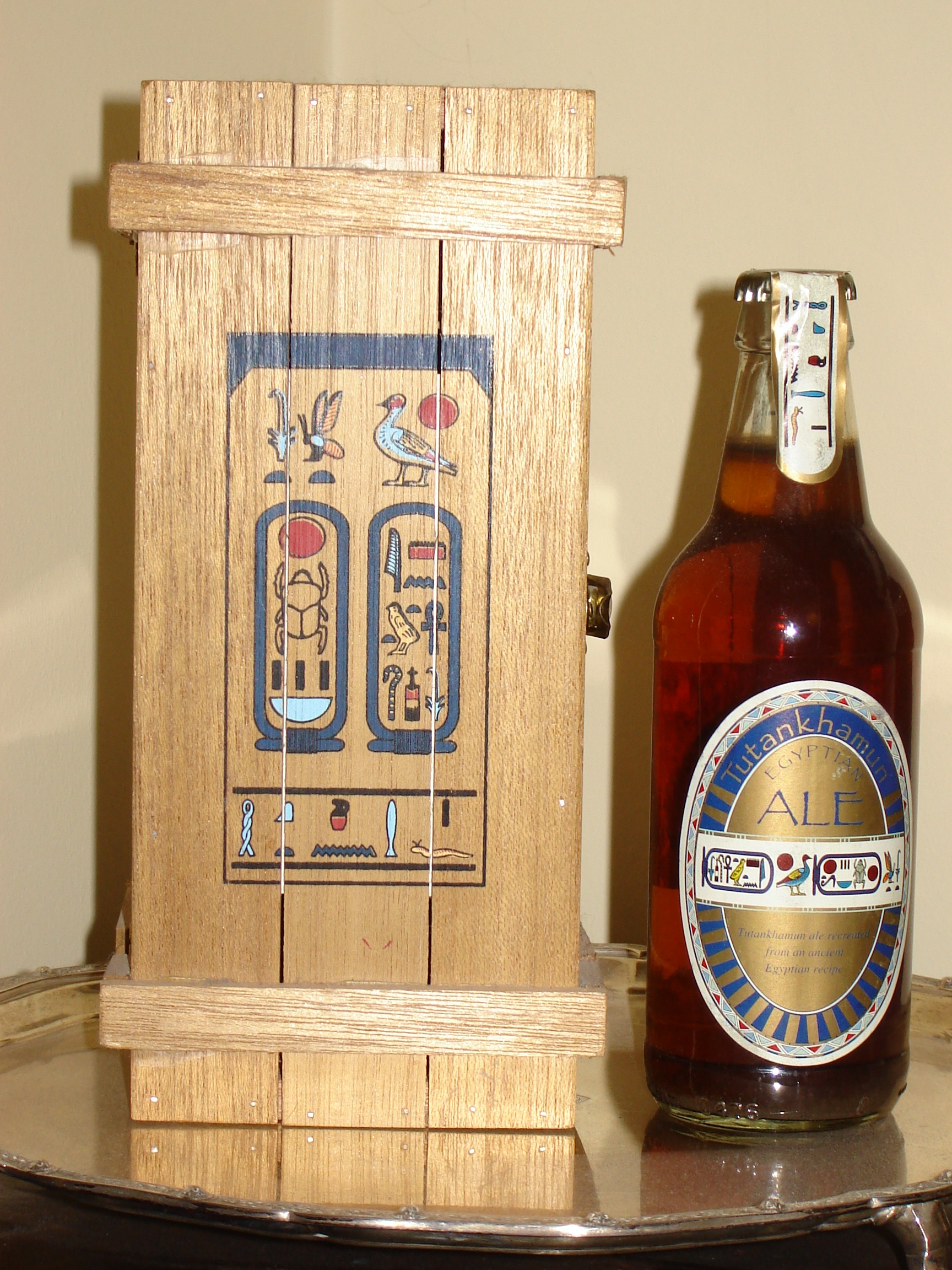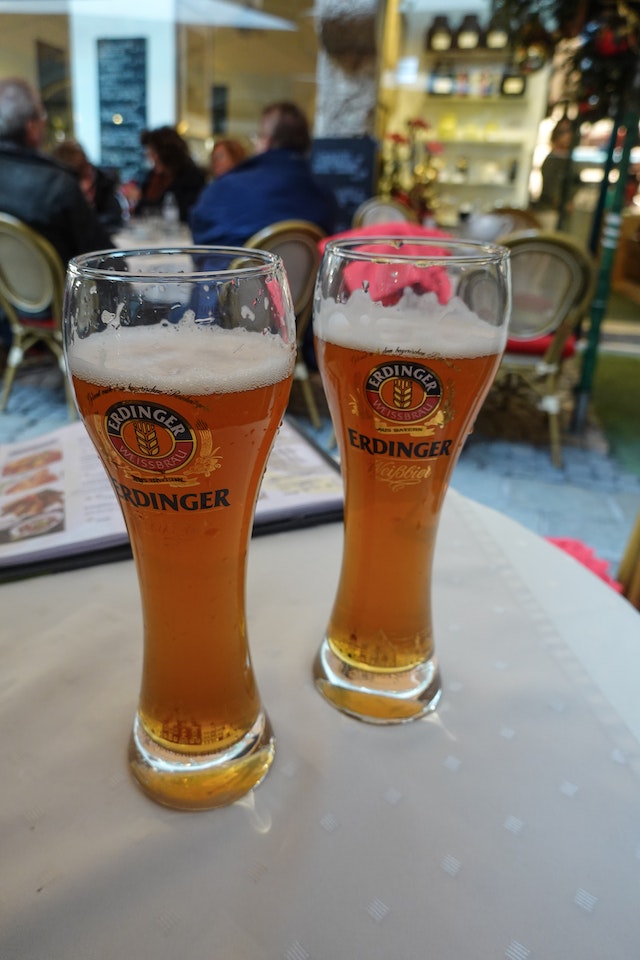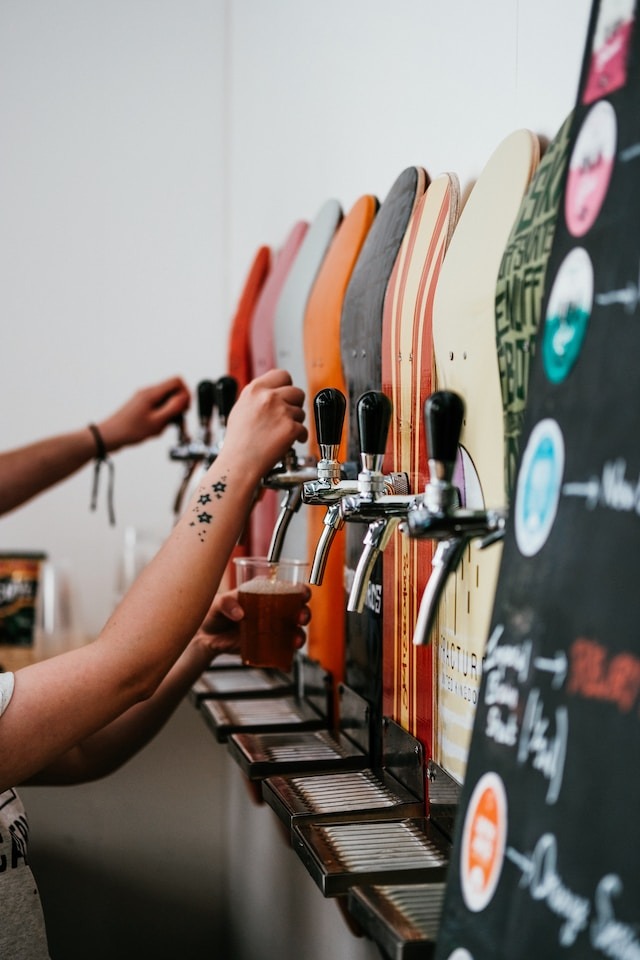Beer is the most ubiquitous alcoholic beverage in the world. Almost all countries have been priding on their own beer brew and marketing it not just nationally, but also globally. Beer is also the oldest-known alcoholic drink.
As centuries went by, the taste and the overall quality of beer were improved. Now, there are thousands of beers to choose from and enjoy, from the mainstream brands to craft beers. There are also starter kits for those who want to brew their own beer at home.
Where and when did the first beer come from? Beer’s origins are difficult to pin down, although the first fermented drinks presumably appeared around 12,000 years ago, around the same time as grain production was beginning to take off.
Hunter-gatherer tribes may have discovered the fermentation process by accident and began manufacturing beer when they transitioned into agricultural civilizations centered on staple crops like wheat, rice, barley, and maize. According to some anthropologists, the Neolithic Revolution may have been sparked by these early peoples’ invention of new agricultural techniques as a result of their need for brewed beverages.
A mead-like mixture comprised of rice, honey, and fruit may have been prepared circa 7000 BCE in the Chinese town of Jiahu, according to evidence found on neolithic pottery.
Since there is concrete evidence of beer manufacturing in the Middle East dating back roughly 5,000 years to the Sumerians of ancient Mesopotamia, it is most probable that the first barley beer originated there. Archaeologists have not only discovered pottery vessels dating back to 3400 B.C. The “Hymn to Ninkasi” is an 1800 B.C. song that is still sticky from alcohol residue. hymn to the Sumerian goddess of beer; provides instructions for a well-known vintage beverage that was brewed by female priestesses.
A staple of the Sumerian diet, these nutrient-rich suds were probably a healthier option than the frequently tainted water found in the area’s rivers and canals.
Under the Babylonian Empire, when its antiquated body of laws, the Code of Hammurabi, imposed a daily beer allotment on residents, beer drinking also thrived. Workers received two liters of the beverage every day, while priests and administrators received five. The amount of drink was given based on social position. The beverage was always unfiltered at the time, and bitter, murky sediment would collect at the bottom of the drinking containers. To prevent the muck, special drinking straws were developed.
The ancient Egyptians were among the societies who enjoyed beer the most. Everyone from pharaohs to peasants and even toddlers drank beer as part of their daily diet, and those who worked along the Nile were frequently compensated with a portion of the wholesome, sweet drink. Numerous of these historic brews included odd flavors like mandrake, dates, and olive oil.
It wasn’t until the Middle Ages when Christian monks and other artisans started creating beers spiced with hops that more contemporary-tasting libations appeared.
Ancient Era – 55 BC
- 7000 BC – The first documented evidence of beer making occurred in China. Ancient Chinese brewers concocted a beverage called kui, a beer which was made from rice, fruit and honey.
- 3510 BC – c. 3100 BC – Both beer and wine were brewed in Godin Tepe which is now an archaeological site in central Iran.
- 2250 BC – Beer was brewed in ancient Egypt, where it became a vital industry. Egyptian beer was made from baked barley bread.
- 2150 BC – c. 2000 BC – The “Epic of Gilgamesh,” a Sumerian epic poem written in ancient Mesopotamia (now Iran), mentioned beer.
- 1800 BC – A Sumerian poem for the goddess of beer, Ninkasi, was written.
- 1754 BC – The Code of Hammurabi also wrote laws regarding the regulation of beer brewing.
- 1600 BC – Ancient Egyptian medical texts wrote over a hundred prescriptions for remedies which included beer.
- 800 BC – Ancient Germans brewed beer, using the same method as the ancient Sumerian beer makers employed.
- 450 BC – Greek playwright Sophocles recommended a diet that included beer, but suggested that beer should be drunk in moderation.
- 55 BC – Roman legions introduced beer to northern and central Europe, particularly to the Celtic and Teutonic tribes.
100s AD – 1500s
179 AD – The Romans brewed beer at an outpost in Regensburg, Germany called Casta Regina (or Castra Regina).
500 AD – 1000 AD – Beer making in Europe began to flourish during the first half of the Middle Ages. From being a family tradition, brewing beer gradually became an industry. Monks in particular during that time were brewing beer making it as part of their duty to provide tired and hungry pilgrims with food and drink.
900 – 1000 AD – Hops were introduced to the beer making process.
1490s – Christopher Columbus discovered American Indians brewing beer made from corn and black birch sap.
1516 – Bavarian beermakers drafted a beer purity law called the “Reinheitsgeobot,” which prohibited the use of any other ingredients than malt, hops and water (the use of yeast, another key ingredient in brewing, was yet to be discovered).
1553 – Beck’s Brewery was founded in Germany. It is one of the oldest existing breweries in the world.
1587 – Sir Walter Raleigh made his own beer in his colony in Virginia, becoming the first person to brew beer in the New World. However, fellow colonists ignored his beer and requested for ale from England instead.
1600s – 1700s
1612 – The first commercial brewery in the US was established in New Amsterdam (now New York City).
1620 – Due to the shortage of beer supplies, pilgrims went to settle in Plymouth Rock.
1674 – Harvard College opened its own brewery.
1750 – The advent of Industrial Revolution paved the way for faster and more efficient production of beer, making it more widely available to consumers.
1757 – George Washington wrote a personal note entitled “To Make a Small Beer.”
1759 – Arthur Guinness established his own brewery in Ireland, where he brewed the first Guinness stout.
1800s – 1910s
1810 – The first Oktoberfest in Munich, Germany was held.
1842 – The first golden lager was brewed in Pilsen, Bohemia, in what is today’s Czech Republic.
1873 – Heineken, one of the most famous global beer brands, was introduced in the Netherlands.
1873 – German immigrants Adolph Coors and Jacob opened a brewery in Golden, Colorado, which became Coors Brewing Company.
1876 – French microbiologist and chemist Louis Pasteur developed pasteurization for stabilizing beer.
1876 – Budweiser, a pale lager, was first brewed in St. Louis, Missouri, USA.
1876 – Sapporo Brewery was founded in Tokyo, Japan.
1880 – There were more than 2,300 breweries in the USA.
1888 – Brahma beer, one of Brazil’s most beloved beer brands, was introduced in 1888.
1889 – Asahi Breweries was founded in Osaka, Japan, originally as the Osaka Beer Company.
1890s – The Pabst Brewing Company became the first brewery in the US to sell over one million barrels per year.
1903 – Tsingtao Brewery was founded in Qingdao, a city in Shandong Province, China. It is currently China’s second biggest brewery.
1909 – While on a safari in Africa, President Theodore “Teddy” Roosevelt purchased 500 gallons of beer.
1919 – The ratification of the 18th Amendment to the US Constitution, also known as the Prohibition, banned the manufacture, importation, transportation and sale of liquors.
1920s – 1940s
1920 – The Prohibition was enforced.
1925 – Corona beer was first brewed by German immigrants in Mexico. It became one of America’s best-selling beer brands.
1930s – Mild ale and pale ale (which they call “bitter”) had become the favorite among British beer drinkers.
1930s – With the growing popularity of refrigerators, beer consumption at home had grown exponentially.
1933 – The Prohibition was lifted, making alcohol legal again.
1934 – A total of 756 breweries were back in operation after the lifting of the Prohibition.
1935 – The beer can was invented.
1943 – Brewing companies were required to allot 15% of their production for the US military.
1948 – The malt liquor was developed.
1950s – 1970s
1950s – By this time, there were 407 breweries in operation in the US.
1958 – The Hawaii Brewing Company introduced the first all-aluminum beer can (beer cans were previously made of steel).
1959 – Danish beer brand Skol was introduced.
1962 – Pittsburgh Brewing Company introduced the first tab top beer can.
1963 – Metal kegs were introduced in Germany.
1966 – Budweiser became the first brand to sell over 10 million barrels per year.
1969 – For the first time, sales of canned beer surpassed those of bottled beer in the US.
1978 – Home brewing was legalized in the US. However, there was a possibility that individual states and areas could make it illegal.
1978 – The American Homebrewers Association was established.
1980s – 2000s
1980 – China’s Beijing Yanjing Brewery, now one of the biggest breweries in the world, was founded.
1982 – The first legal brew pub in the US opened to the public (Brew pubs had been illegal since the 1920s).
1988 – The Asahi Super Dry was introduced in Japan, becoming the world’s first dry-hopped beer.
1991 – US brewers produced 20% of the world beer volume.
1992 – Anheuser-Busch, Miller Brewing, Coors, Stroh and G. Heileman led the US domestic beer production.
1996 – A replica of the ancient Egyptian beer, called the Tutankhamun Ale, was brewed by Courage Brewery. It was made of emmer wheat.
2000s – present
2005 – Finnish brewery Laitilan brewed Kukko Pils, the world’s first gluten-free beer. It was also the first beer to earn a gluten-free product label.
2009 – Japanese brewery Sapporo teamed with Russian scientists to come up with “Sapporo Space Barley,” which is one of the world’s most expensive beers. It used malt made from barley seeds grown during a spaceflight.
2010 – The oldest drinkable beer was found on a 19th-century Baltic shipwreck off the coast of Finland. It tasted old (no surprise), was very acidic, and tasted burned.
2013 – More than 25% of the world’s beer production came from China.
2013 – Scottish brewery Brewmeister released the “Snake Venom.” So far, it is the strongest beer in the world with a whopping 67.5% ABV.
2013 – North Dakota emerged as the biggest beer-drinking state, with 43.3 gallons of beer per drinking-age adult.
2014 – There were a total of 27,182 beer distributors in the US.
2014 – The total value of the US craft beer market amounted to $19.6 billion.
2016 – Craft breweries (or microbreweries) have become more popular than ever. As of this period, there are a total of 5,301 operating breweries in the US.
2016 – As of this period, 13% of all beers in the US is imported.
2016 – Total retail beer sales in the US reached $34 billion.
Top Beer- Producing Countries
- China – 460 million hectoliters
- United States – 221.35 million hectoliters
- Brazil – 133.35 million hectoliters
- Mexico – 105 million hectoliters
- Germany – 94.96 million hectoliters
- Russia – 78.2 million hectoliters
- Japan – 55.15 million hectoliters
- United Kingdom – 44 million hectoliters
- Vietnam – 40.8 million hectoliters
- Poland – 40.73 million hectoliters
Top Beer-Consuming Countries
- Czech Republic – 142.6 liters per capita
- Seychelles – 114.6 liters per capita
- Austria – 104.8 liters per capita
- Germany – 104.7 liters per capita
- Namibia – 104 liters per capita
- Poland – 97.8 liters per capita
- Ireland – 97 liters per capita
- Lithuania – 96.6 liters per capita
- Belize – 93.8 liters per capita
- Estonia – 93.5 liters per capita
*note: The United States comes at 17th place, with a consumption of 75.8 liters per capita.
Beer Belt
Beer arrived in Europe around 5000 BC. Across Northern Europe you find what could be called the “Beer Belt” which stretches from Ireland in the west, through the United Kingdom, Belgium, the Netherlands, Northern France, Germany and Czechoslovakia into Eastern Europe and Russia.
A fairly moderate climate and soils that are particularly favorable for the growing of cereals, coupled with countless sources of underground water, makes this an ideal region for beer production.
The fact that these mineral water sources all have their own distinctive character and taste has led to the development of an enormous range of different beers throughout Europe. For instance, Dublin has very hard water and this is particularly good for making stout, like Guinness.
Pilsen, in the Czech Republic, has very soft water that is perfect for brewing the pale beer that is known as Pils throughout the Continent. Gypsum is abundant in Burton on Trent’s water, which makes it perfect for producing pale ale. Additionally, certain areas contain exceptionally abundant wild yeasts that are found in the air, and they have been exploited since ancient times to create beers by spontaneous fermentation. The Weihenstephan Abbey in Bavaria, where brewing privileges were granted by the neighboring town of Freising in 1040, is home to the oldest commercial brewery that is still in use.
By the end of the Middle Ages, beer was one of the most popular alcoholic beverages in Europe, and it was regularly drank by all social classes in the northern and eastern regions of the continent where grape production was challenging or impossible.
Although a small number of multinational corporations now control a large portion of the world’s beer production, the “Beer Belt” still has hundreds of smaller manufacturers.
Heavy tariffs on French wine in Belgium greatly encouraged the consumption of beer (today it’s the other way around). As a result, there were more than 3,000 commercial breweries in the nation a century ago.
Since setup expenses were relatively modest but transportation costs were high, a large number of tiny local producers prospered and are currently doing so by exporting their beers throughout the world.
Beer also has different parts when it comes to literature and mythologies. Learn more about this in our article about the role beer plays in stories and myths across cultures.
Conclusion:
Beer has contributed an undeniable impact to the world economy and played an important role in our history and culture. In fact, some say that the history of beer is the history of civilization itself. Its role has significantly evolved throughout the centuries – a literary inspiration, a remedy, a simple family refreshment, a banned beverage, and now a multibillion-dollar industry.
You may also read our article about the history of beer through archaeology for more information.



